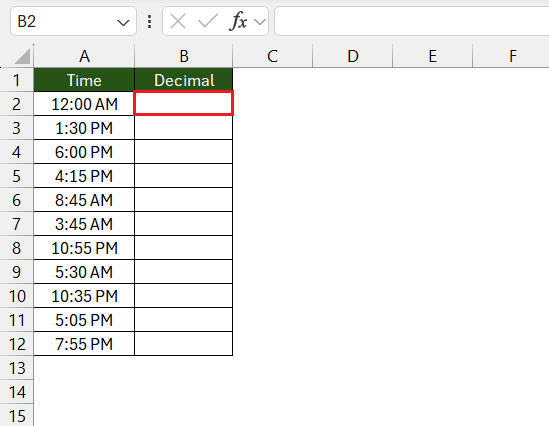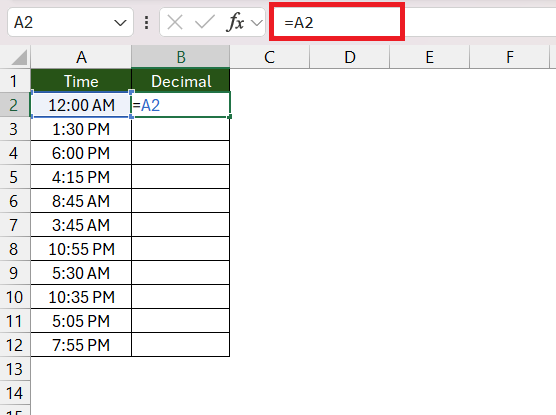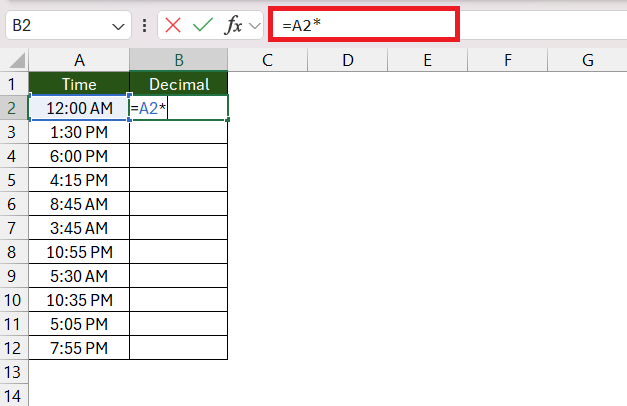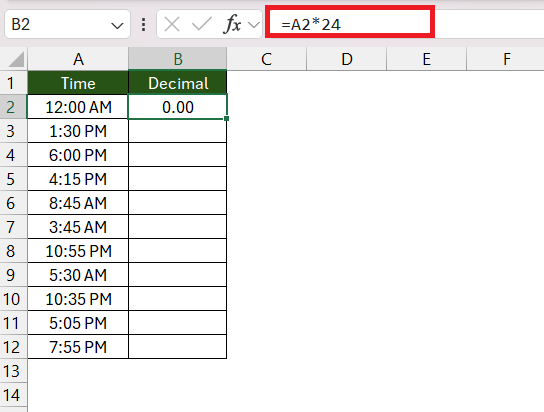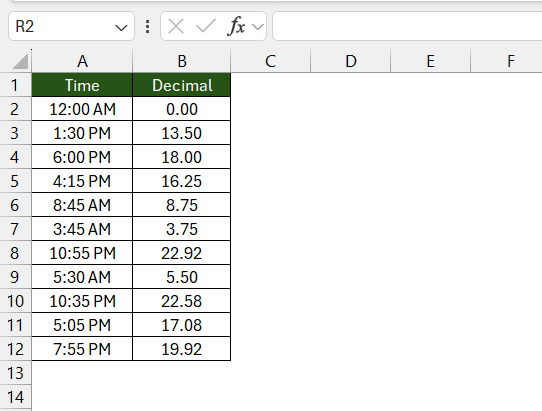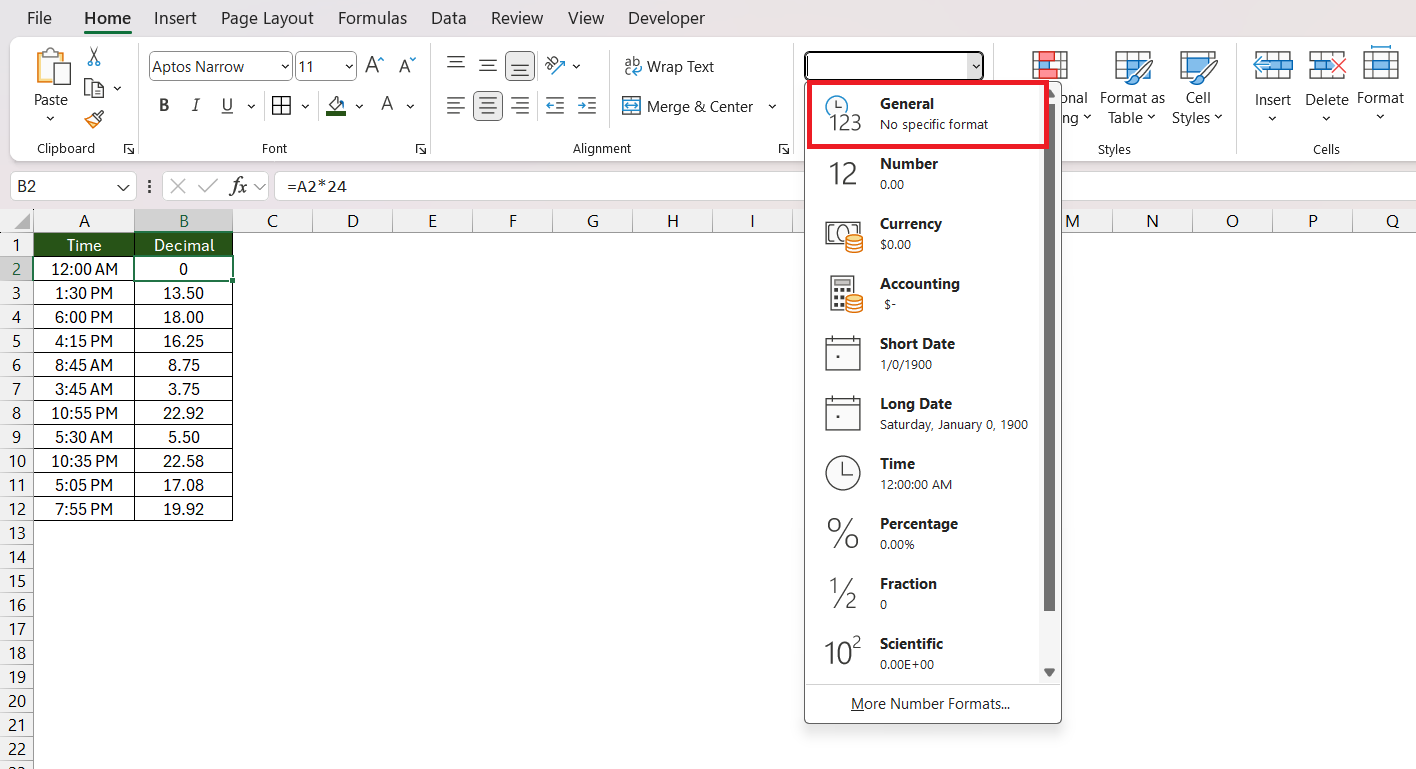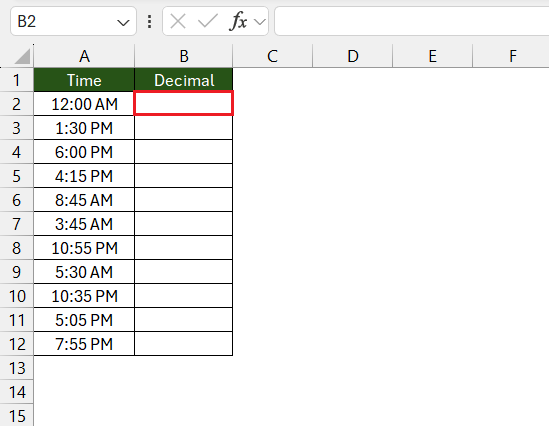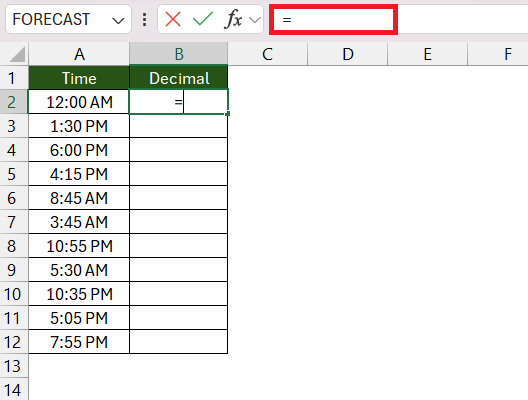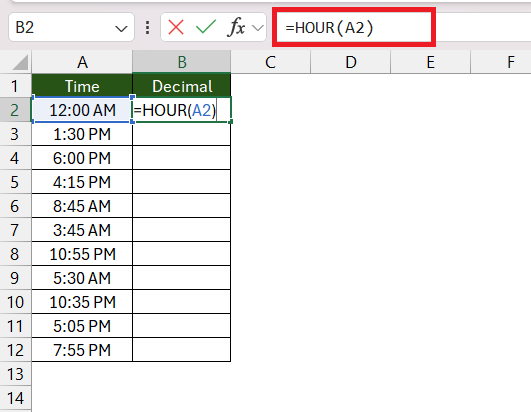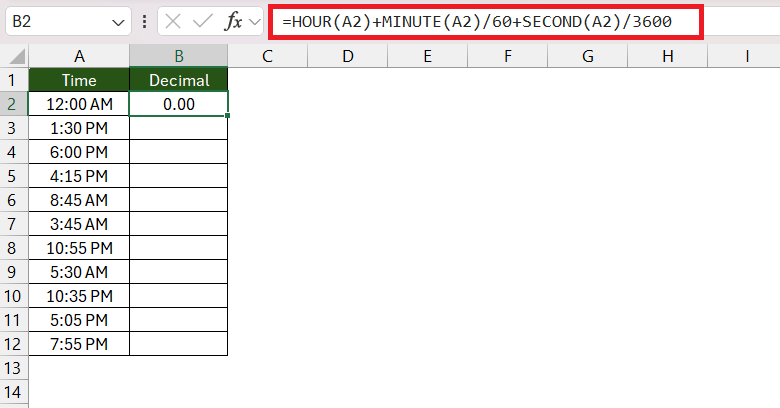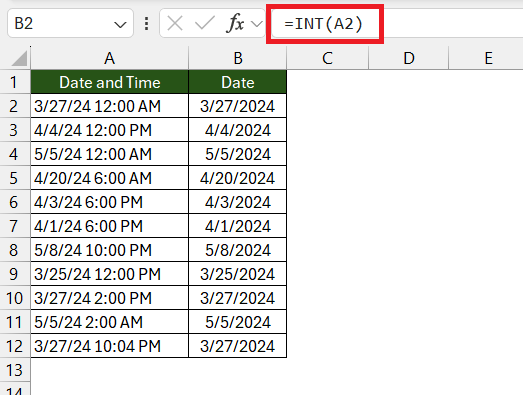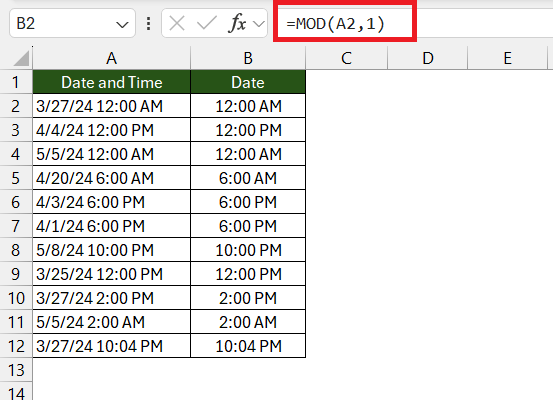

Understanding how to convert time to decimal in Microsoft Excel is essential for simplifying calculations involving durations or comparisons of different time periods. This skill is particularly useful across various professional contexts, enabling more precise time management and analysis. Whether it’s for payroll calculations, project management, or data analysis, mastering time conversion can significantly enhance your Excel proficiency.
Key Takeaways:
- Converting time to decimal in Excel streamlines calculations involving hours worked, interest accrual, or event durations.
- The multiplication method provides a quick way to convert time by multiplying the time value by 24 to get the decimal equivalent of hours.
- Using Excel’s time functions (HOUR, MINUTE, SECOND) offers a more detailed approach for converting time to decimals, accommodating precise data analysis needs.
- Advanced techniques like splitting dates and times offer granular control for more complex data handling, including separate calculations for dates and times.
- Troubleshooting common issues, such as incorrect cell formatting or formula errors, is crucial for accurate time to decimal conversions, ensuring reliability in your Excel tasks.
Table of Contents
Introduction to Excel Time Conversions
The Importance of Converting Time to Decimal
In the seamless world of Excel, understanding how to convert time to decimal is like having a Swiss Army knife—it’s incredibly helpful in many situations. When time is stored in decimal format, it becomes easier to handle, whether you’re calculating durations or comparing different time periods.
Imagine you have to calculate the total hours worked in a week or determine the difference in time between two events; decimal time is your ally. It’s the cradle that rocks the complexities of time calculations to sleep.
When You Might Need to Convert Time Formats
You might find yourself needing to convert time formats in Excel for a variety of reasons. Whether you’re a project manager tracking the hours spent on tasks, an HR professional calculating employee hours for payroll, or an analyst comparing time-stamped data points, converting time to decimals often simplifies these processes.
In a financial context, you might need to convert time to calculate interest accrued over a specific period accurately. In the everyday workflow, converting meeting or event durations into a uniform format can streamline planning and analysis. Anytime you need precise, quantitative comparisons or summation of times, converting to decimals is the way to go.
Methods for Converting Excel Time to Decimals
Method 1 – Using Multiplication for a Quick Fix
Converting Excel time to decimal doesn’t get easier than the multiplication method. Here’s how to do it in a flash:
STEP 1: Click on the cell where you’d like the decimal value to appear.
STEP 2: Enter the equal sign (=) to start the formula. Click on the cell containing your time value or type its address.
STEP 3: Type an asterisk (*) for multiplication.
STEP 4: Enter 24 and press Enter key, if you’re after the hour value in decimals.
STEP 5: Drag the formula down.
This neat trick works because Excel considers a full day as ‘1’. So, when you multiply a time value by 24, you’re essentially converting the time from the ‘part of a day’ format to ‘number of hours’ in decimal. This method is quick, accurate, and without fuss — making it a favorite for those needing a fast solution.
Note: Remember to set the cell’s formatting to “General” to see the converted decimal number.
Method 2 – Getting Precise with Time Function Formulas
Excel comes equipped with a set of powerful time functions that can take your data analysis to the next level. When you harness these functions, you gain finer control over time manipulation. By utilizing HOUR(), MINUTE(), and SECOND() functions in cohesion with arithmetic calculations, you can convert time down to the exact second in decimal form.
Excel treats time as a fraction of a day, so the HOUR() function extracts hours, MINUTE() gets you the minutes, and SECOND() picks out the seconds. Here’s a step-by-step guide using these functions for a meticulous approach:
STEP 1: Select the cell where you want the result.
STEP 2: Type = to initiate the formula.
STEP 3: Use the HOUR() functions to break down your time.
STEP 4: Add the components together, with MINUTE() and SECOND() divided by 60 and 3600 respectively to convert them to a fraction of an hour.
For hours in decimal:
For minutes in decimal:
For seconds in decimal:
This method is the go-to when every second counts in your data analysis. While it’s more complex, it captures every fragment of time, ensuring that your calculations are comprehensive and accurate.
Advanced Tips and Tricks
Splitting Dates and Times for Granular Control
For instance when you’re dealing with both dates and times in Excel, precise control over how you split them becomes vital. Since Excel stores dates as whole numbers and time as fractional values, splitting them is straightforward:
To extract just the date, use the INT() function, which rounds down to the nearest whole number, effectively giving you the date part of a datetime value
=INT(A2)
To isolate the time, subtract the date (as an integer) from the entire datetime value. Alternatively, use the MOD() function with a divisor of 1 to find the remainder after division, which represents the time portion.
=MOD(A2,1)
These methods hand you the reins to deal with dates and times separately. Whether it’s to calculate time intervals with more granularity or simply to format and present data more effectively, mastering these splits can be immensely useful.
Note: Once split, ensure that you apply the appropriate date or time formatting to the cells to display your results as intended.
Avoiding Common Pitfalls
Understanding Excel Time Format Quirks
Navigating Excel’s time formats can be akin to unraveling a mystery — it’s full of quirks that might confuse the uninitiated. Here’s what you need to keep in mind:
- Excel Views Time as a Fraction of a Day: This means 12:00 PM is 0.5, 6 AM is 0.25, and so on. This can lead to unexpected results if your cells aren’t formatted correctly.
- Time is Also Stored as a Serial Number: Excel assigns a serial number to each day since January 1, 1900, with times represented as decimal fractions of a 24-hour day.
- Positive and Negative Time Values: By default, Excel won’t display negative time values. You’ll need to change the date system settings for that.
Understanding these quirks will help prevent common pitfalls. It’s crucial to keep an eye on your cell formatting to avoid any potential issues with how time data is displayed and interpreted.
Remember: Always double-check your work, especially when dealing with complex formulas or large datasets where time format quirks could have a significant impact.
Troubleshooting Conversion Errors
When converting time to decimal in Excel, you may encounter errors that can throw off your data. Here’s a quick troubleshooting guide to keep you on track:
- Incorrect Cell Formatting: Ensure the cell format aligns with your expected output. If it’s set to display time but you want a decimal, change to ‘General’ or ‘Number’ format.
- Division by Zero Errors: Check your formulas to prevent dividing by zero, which can occur if you mistakenly reference an empty cell.
- Circular References: If a formula refers back to its own cell, Excel will return an error. Double-check references to ensure they point to the correct cells.
- #VALUE! Errors: These happen when the wrong type of argument is passed to a function. Verify the cells you’re referencing contain numerical values, not text.
- #NUM! Errors: If your formulas are returning numerical errors, this often means there’s an issue with the data types being processed, like negatives in time values.
When facing errors, take a step back, review your formulas and cell formats, and validate your data types. With patience and attention to detail, you can smooth out the bumps and get your conversions back on track.
Tip: Excel’s ‘Evaluate Formula’ feature can help you step through complex formulas to find where things might be going wrong.
FAQ: All About Converting Excel Time to Decimal Values
How Do I Convert Time Expressed in Hours, Minutes, and Seconds to Decimal?
To convert time expressed in hours, minutes, and seconds to decimal hours in Excel, use the formula:
Replace A1 with the cell that contains your time. Remember to format the cell where you enter the formula to ‘General’ to view the decimal result.
Can I Perform Time to Decimal Conversions for Large Data Sets Effectively?
Yes, you can perform time to decimal conversions for large data sets efficiently in Excel by copying formulas down columns or using the ‘Fill’ function. Just apply the formula to the first cell, then drag the fill handle across the desired range to replicate the formula for all data.
How to add or subtract times to get hours/minutes/seconds in excel?
To add or subtract times to get hours, minutes, or seconds in Excel, follow these steps:
- For Addition: Use the formula
=Time1 + Time2, and for hours, add=HOUR(Cell), for minutes=MINUTE(Cell), and for seconds=SECOND(Cell)to the result. - For Subtraction: Use
=Time1 - Time2, applying the same HOUR, MINUTE, or SECOND functions to extract specific time units.
Remember to format your cells correctly to display time or decimal values before performing these operations.
How does Excel convert time to decimal?
Excel converts time to decimal by multiplying the time by 24 for hours, by 1440 for minutes, or by 86400 for seconds. This works because Excel treats one day as the numeric value 1, so one hour, minute, or second is a fraction of that value.
How to convert text to time format in excel?
To convert text to time format in Excel, use the TIMEVALUE function or the Text to Columns wizard. With TIMEVALUE, input =TIMEVALUE(A1) where A1 is the cell with the text. Text to Columns converts multiple cells quickly: select the cells, go to ‘Data’, click ‘Text to Columns’, and follow the prompts to format as time.
How to calculate the difference between two time values in excel?
To calculate the difference between two time values in Excel, subtract the earlier time from the later time:
Format the result cell as ‘Custom’ with the format [h]:mm:ss if you expect the difference to exceed 24 hours.


John Michaloudis is a former accountant and finance analyst at General Electric, a Microsoft MVP since 2020, an Amazon #1 bestselling author of 4 Microsoft Excel books and teacher of Microsoft Excel & Office over at his flagship MyExcelOnline Academy Online Course.


